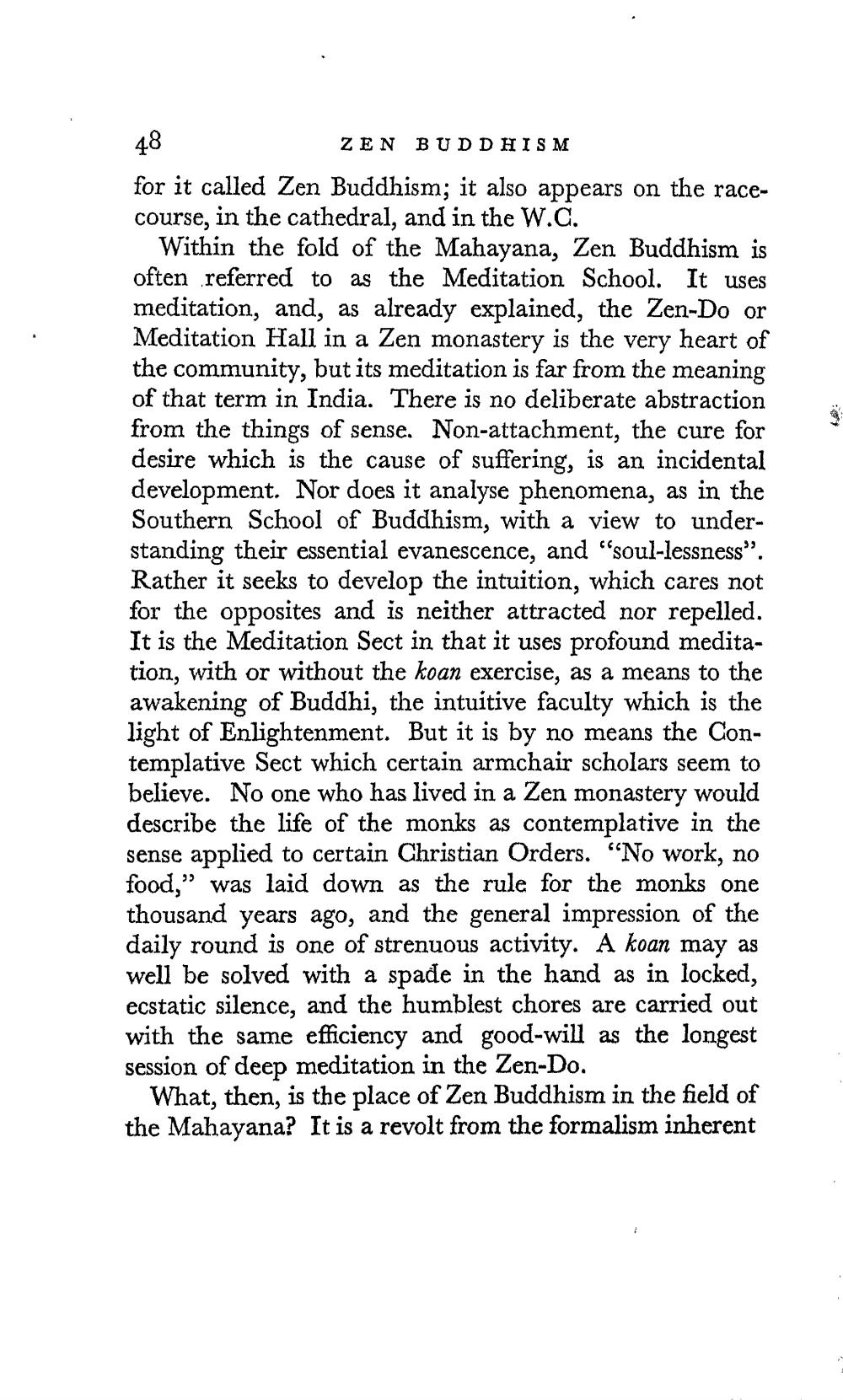________________
ZEN BUDDHISM for it called Zen Buddhism; it also appears on the racecourse, in the cathedral, and in the W.C.
Within the fold of the Mahayana, Zen Buddhism is often referred to as the Meditation School. It uses meditation, and, as already explained, the Zen-Do or Meditation Hall in a Zen monastery is the very heart of the community, but its meditation is far from the meaning of that term in India. There is no deliberate abstraction from the things of sense. Non-attachment, the cure for desire which is the cause of suffering, is an incidental development. Nor does it analyse phenomena, as in the Southern School of Buddhism, with a view to understanding their essential evanescence, and "soul-lessness". Rather it seeks to develop the intuition, which cares not for the opposites and is neither attracted nor repelled. It is the Meditation Sect in that it uses profound meditation, with or without the koan exercise, as a means to the awakening of Buddhi, the intuitive faculty which is the light of Enlightenment. But it is by no means the Contemplative Sect which certain armchair scholars seem to believe. No one who has lived in a Zen monastery would describe the life of the monks as contemplative in the sense applied to certain Christian Orders. “No work, no food," was laid down as the rule for the monks one thousand years ago, and the general impression of the daily round is one of strenuous activity. A koan may as well be solved with a spade in the hand as in locked, ecstatic silence, and the humblest chores are carried out with the same efficiency and good-will as the longest session of deep meditation in the Zen-Do.
What, then, is the place of Zen Buddhism in the field of the Mahayana? It is a revolt from the formalism inherent




